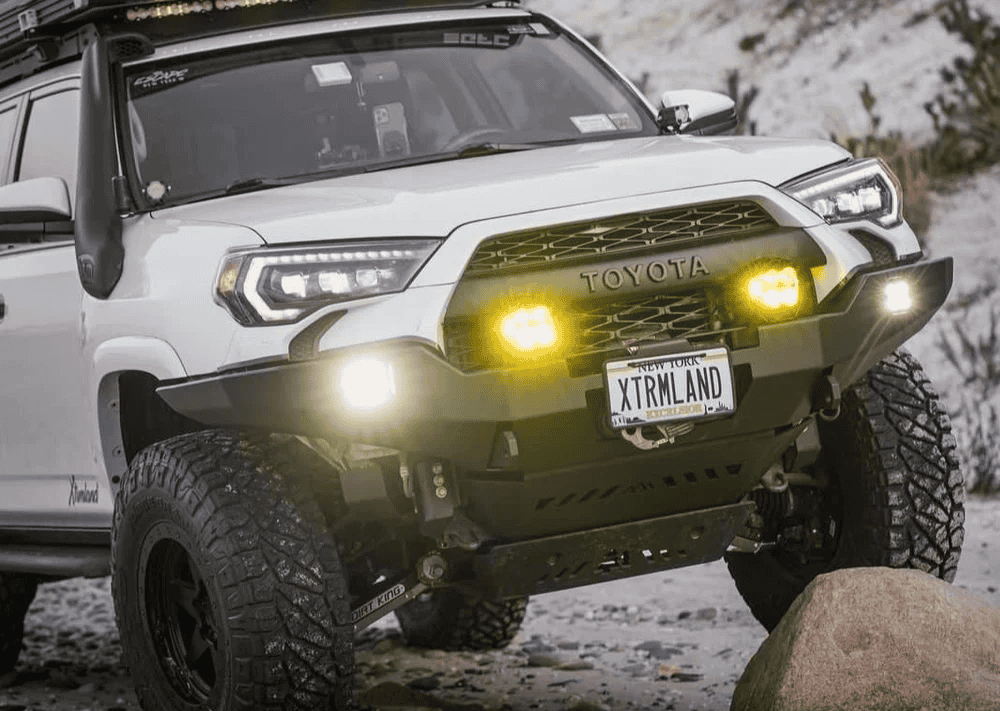Overland Vehicles

The Toyota Hilux has a long reputation for durability, which makes it a natural base for remote travel. Building it into an expedition truck starts with a simple goal: deliver range, comfort, and safety without overloading the chassis. That means thoughtful weight management, dependable driveline components, and systems you can service on the trail.
Start with payload. Know the curb weight, note your accessories, and track everything that joins the truck. A steel front bar, winch, dual battery, canopy, and rooftop tent add up quickly. Keep heavy items low and forward to protect handling and braking. If your region allows, a certified GVM upgrade can restore working margin once constant load is installed.
Suspension needs to support constant weight while keeping articulation and ride quality. Choose springs matched to your final load rather than guessing. Pair them with dampers that control heat and provide consistent response on corrugations. Bushings, control arms, and bump stop tuning all contribute to stability when the track gets rough.
Tires and gearing set the tone for the trip. All terrain patterns suit mixed conditions, while mud terrain designs help in deep ruts and clay. Sizing should consider guard clearance, turning radius, and the effect on effective gearing. A sensible upsized tire can add clearance without compromising drivability.
Protection helps you travel confidently. A front bar with proper airbag compatibility, rated recovery points, and skid plates shields key systems. Rock sliders protect sills during technical sections. A snorkel reduces water ingestion risk during crossings and feeds cleaner air on dusty roads. A sealed air box and filter monitoring are smart additions for silty environments.
Recovery gear is a non negotiable. A quality winch with synthetic line, soft shackles, a damper, and tree saver make safe pulls possible. Combine traction boards, a shovel, and a compact air compressor for tire work. Rear differential lockers are valuable when momentum is undesirable, and an onboard air setup speeds pressure changes between pavement and dirt.
Power and water keep the camp running. A dual battery or lithium house system powers a fridge, lights, and charge ports. Solar input covers long stays, while a DC to DC charger tops the bank when you drive. Plan water capacity around climate and group size, then mount tanks inside the canopy or undertray to protect fittings. A compact filtration setup helps avoid contamination.
Storage dictates daily rhythm. A well planned canopy with drawers, a fridge slide, and tie down points secures equipment and speeds camp chores. Heavy tools and spares live down low. Keep a clear pathway to critical items like medical gear and recovery hardware. If you add a rooftop tent, consider wind, ladder placement, and how the ladder affects access to gear.
A reliable gearbox and low range transfer case are expedition essentials. Service intervals for fluids and belts should be tightened before long travel. Reinforce critical brackets and inspect common wear points such as rear leaf spring hangers and steering components. Spare parts like belts, filters, and a hub kit can rescue a trip.
Weigh the truck before and after the build to verify distribution across axles. A balanced layout reduces driver fatigue and brake fade. If towing a trailer, confirm tongue weight and braking performance on a test loop before committing to remote routes.
Comfort matters on long days. Supportive seating, clear comms, and usable navigation tools reduce mistakes. Use offline maps and carry paper backups for contingency. A dedicated radio improves group coordination when cell coverage disappears.
Once you understand the recipe, execution is everything. Clean wiring, proper fusing, and labeled circuits make field repairs straightforward. Fasteners should be torqued and paint marked. After the first shakedown, retorque suspension hardware, recheck alignment, and fine tune spring rates or damping if the truck feels harsh or underdamped.
If you are ready to move from sketches to a finished truck, our team builds overland platforms that survive real miles. Explore our approach to overland rigs and how we balance payload, ride quality, and range. For tailored packages, see our custom overland upfit process, where we integrate power, water, storage, and protection with serviceable installs. Curious about who is behind the tools and our handoff experience in Fayetteville Arkansas? Learn more at why choose OZK.
When your Toyota Hilux expedition truck needs professional fit and finish, OZK Customs delivers clean installs and a smooth pickup experience. Tell us your route, group size, and priorities, and we will build the trustworthy setup that keeps you moving.
Ready to turn plans into a dialed Hilux expedition build? Tell us how you travel, who you ride with, and what terrain you chase. OZK Customs will translate your wish list into a reliable, quiet, and serviceable rig with clean wiring, tuned suspension, and smart storage. Fill out the form to start your custom overland build with a team that sweats the details.
ADDRESS:
6159 E Huntsville Rd, Fayetteville, AR 72701
PHONE:
(479) 326-9200
EMAIL:
info@ozkvans.com